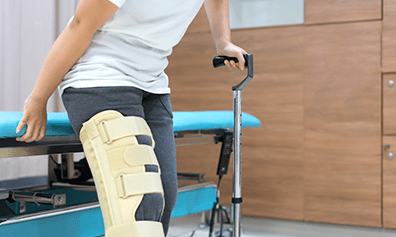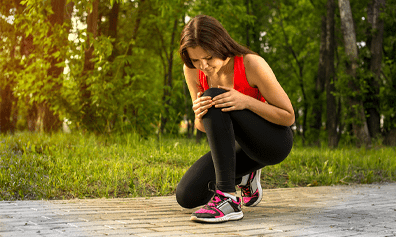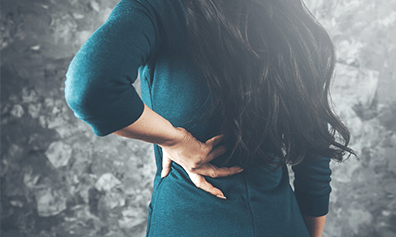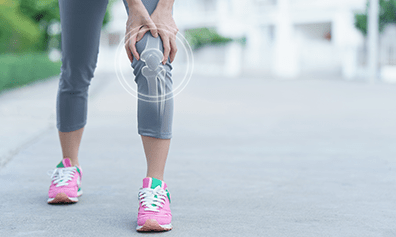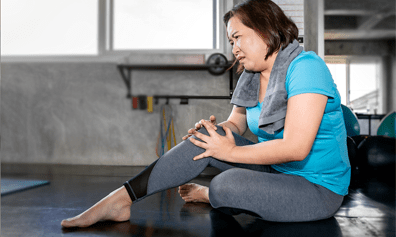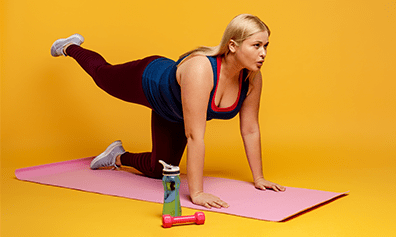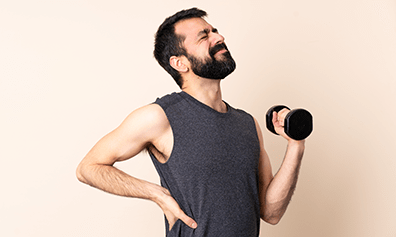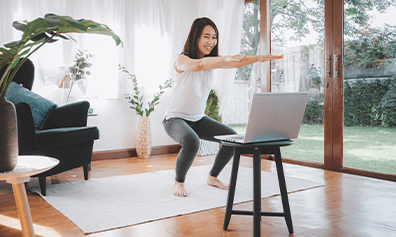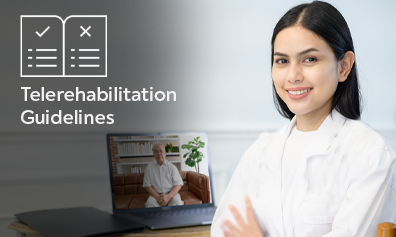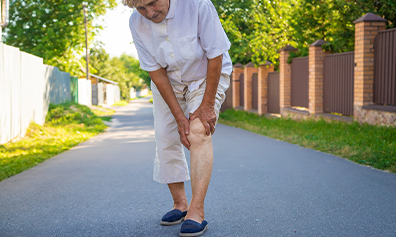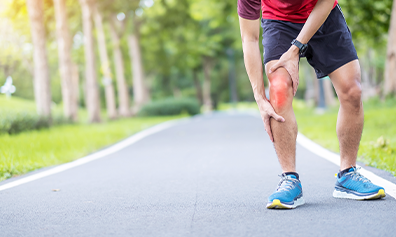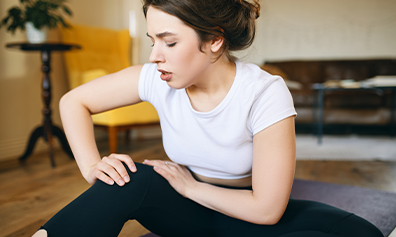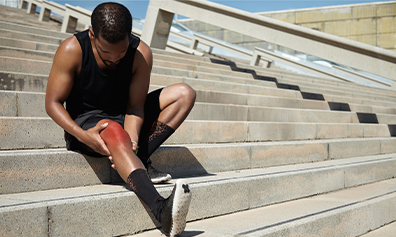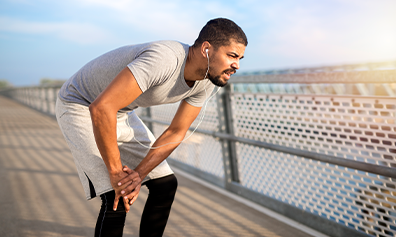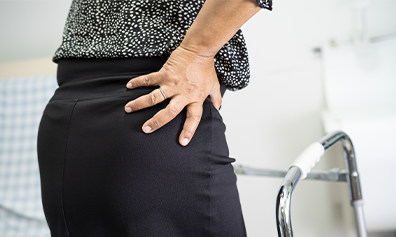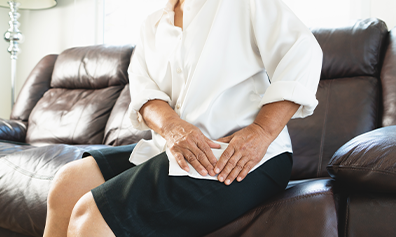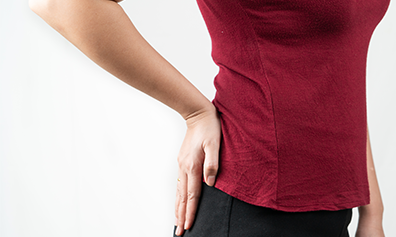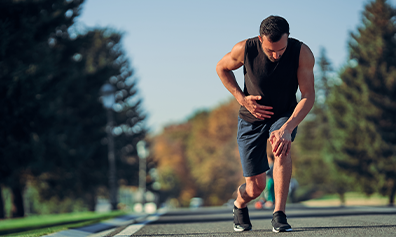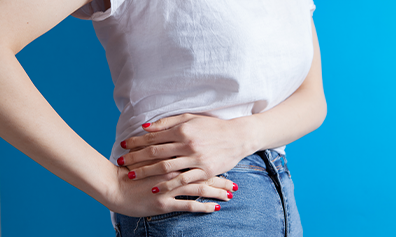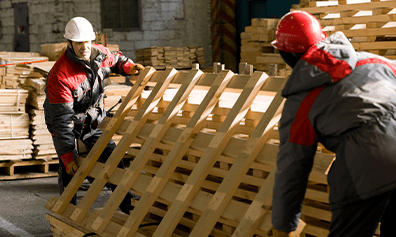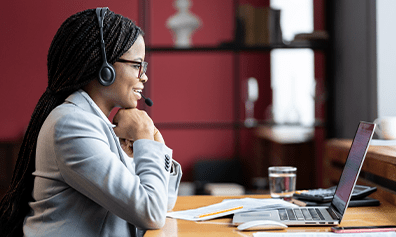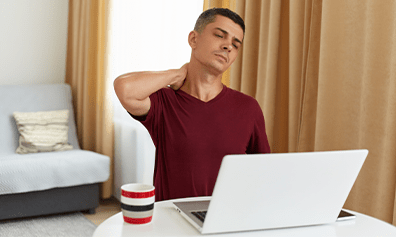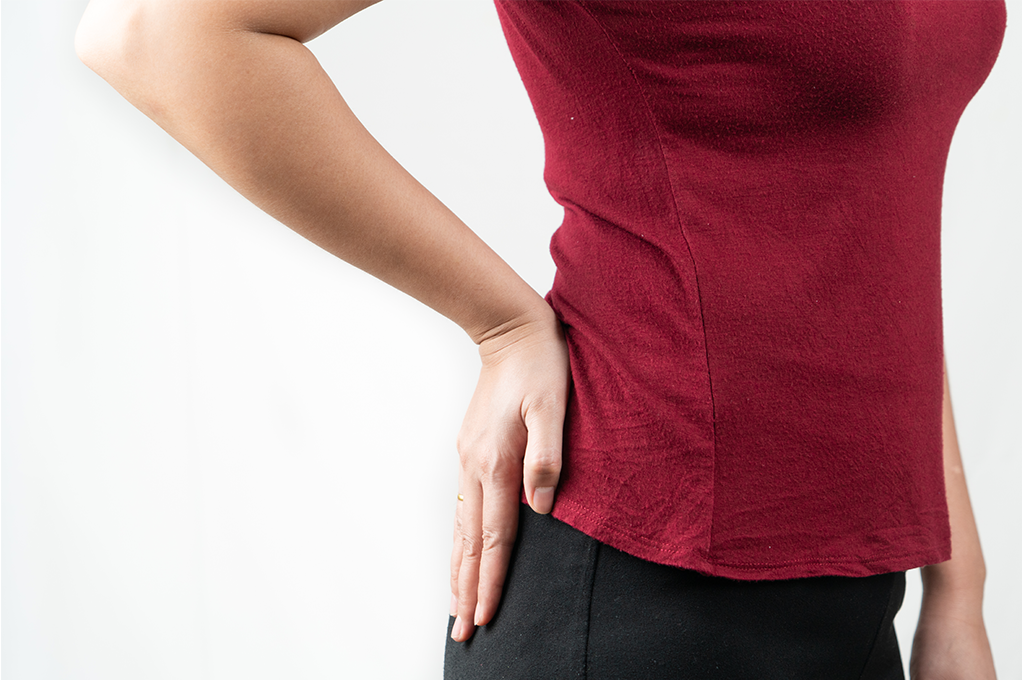
What is Hip Osteoarthritis?
Osteoarthritis is a degenerative type of arthritis that occurs most often in people 50 years of age and older, though it may occur in younger people, too.
In osteoarthritis, the cartilage in the hip joint gradually wears away over time. As the cartilage wears away, the protective joint space between the bones decreases resulting in friction. The damaged bones may grow outward and form bone spurs (osteophytes) to compensate for the lost cartilage. Osteoarthritis develops slowly, and the pain from it worsens over time.
Why does it happen?
Osteoarthritis has no single specific cause, but certain factors increase the likelihood of developing the disease, including:
- • Increasing age
- • Family history of osteoarthritis
- • Previous injury to the hip joint
- • Obesity
- • Improper formation of the hip joint at birth, a condition known as developmental dysplasia of the hip
Even if you do not have any of the risk factors listed above, you can still develop osteoarthritis.
What symptoms should I look out for?
- •Pain –Pain around the hip joint is the most common symptom of hip osteoarthritis.
Usually, the pain develops slowly and worsens over time, although sudden onset is also possible. Pain and stiffness may be worse in the morning or after sitting or resting for a while. Over time, painful symptoms may occur more frequently, including during rest or at night.
Additional symptoms may include:
- • Pain in your groin or thigh that radiates to your buttocks or your knee
- • Pain that flares up with vigorous activity
- • Stiffness in the hip joint that makes bending the joint or walking difficult
- • "Locking" or "sticking" of the joint, and a grinding noise (crepitus) during movement caused by loose fragments of cartilage and other tissue interfering with the smooth motion of the hip
- • Decreased range of motion in the hip that affects the ability to walk and may cause a limp
- • Increased joint pain with rainy weather
How is it diagnosed?
Physical Examination
During the physical examination, the following points will be considered:
- • Tenderness around the hip
- • Range of passive (assisted) and active (self-directed) motion
- • Crepitus (a grating sensation inside the joint) with movement
- • Pain on application of pressure on the hip
- • Problems with walking
- • Any signs of injury to the muscles, tendons, and ligaments surrounding the hip
Imaging Tests
- • X-rays of an arthritic hip may show:
- - a narrowing of the joint space
- - changes in the bone
- - the formation of bone spurs (osteophytes).
What are my treatment options?
Although there is no cure for osteoarthritis, several treatment options will help relieve pain and improve mobility.
1.Lifestyle modifications -Some of the following changes in your daily life can protect your hip joint and slow the progress of osteoarthritis.
- • Minimizing activities that aggravate the condition.
- • Switching from high-impact activities (like jogging or tennis) to lower impact activities (like swimming or cycling) will put less stress on your hip.
- • Losing weight can reduce stress on the hip joint, resulting in less pain and increased function.
2.Physical therapy
- • Minimizing activities that aggravate the condition.
- • Switching from high-impact activities (like jogging or tennis) to lower impact activities (like swimming or cycling) will put less stress on your hip.
- • Losing weight can reduce stress on the hip joint, resulting in less pain and increased function.
3.Assistive devices
- • Using walking supports like a cane, crutches, or walkers can improve mobility and independence.
- • Using assistive aids like a long-handled reacher to pick up low-lying things will help you avoid movements that may cause pain.
4.Medications
- • If your pain affects your daily routine, or is not relieved by other means, your doctor may add medication to your treatment plan.
Exercises for Hip Osteoarthritis
Low-impact exercise -When beginning an exercise program, it’s best to start slowly:
1.Walking
- • If you have balance problems, using a treadmill (with no incline) allows you to hold on.
- • Walking at a comfortable pace (either indoors or outdoors) is an excellent low-impact exercise.
2.Stationary bike
- • If you have balance problems, using a treadmill (with no incline) allows you to hold on.
- • Walking at a comfortable pace (either indoors or outdoors) is an excellent low-impact exercise.
3.Water exercises
- • Freestyle swimming provides a moderate workout.
- • Walking in water up to your waist lightens the load on your joints while also providing enough resistance for your muscles to become stronger.
- • This can greatly reduce pain and improve functional level of the hips.
4.Yoga
- • Regular yoga can help improve flexibility of the joints, strengthen muscles, and lessen pain. .
- • In case of yoga positions that cause additional strain to the hips, modifications are provided by the instructor.
- • A class for beginners is a good place to start.
5.Tai chi
- • The slow, fluid movements of tai chi may relieve arthritis pain and improve balance..
- • Tai chi is also a natural and healthy stress reducer.
Muscle strengthening exercises
Strong muscles can take pressure off your hip joints and help improve balance. Strengthening exercises can be engaged in up to twice per week.
The following are some recommended strengthening exercises:
1.Chair stand
- • Set a chair against the wall and sit towards the front of the chair with your feet flat on the floor. Recline back with arms crossed and hands on your shoulders.
- • With your head, neck, and back straight, bring your upper body forward and slowly rise to a standing position.
- • Slowly return to your original seated position.
- • Repeat this up to six times, slowly building your strength up to 12 repetitions.
2.Bridge
- • Lie down on your back on the floor. .
- • With your knees bent and your feet on the floor, place your palms down near your hips.
- • With a straight back, lift your buttocks up as high as possible.
- • Use your hands for balance. Then lower yourself back to the floor..
- • Do four to six repetitions.
3. Hip Extension
- • Using the back of a chair to balance yourself while standing, bend forward slightly and lift your right leg straight behind you as you tighten your buttocks.
- • Lift the leg as high as possible without bending your knee or arching your back.
- • After holding the position briefly, lower the leg slowly.
- • Repeat with your left leg and try to complete this four to six times on each side.
Flexibility exercises
Gentle flexibility exercises, or range-of-motion exercises, help with mobility and reducing stiffness.
Some of the recommended flexibility exercises are as follows:
1.Inner Leg Stretch
- • Sit with knees bent and the soles of your feet touching.
- • Holding your shins or ankles, bend your upper body forward slightly. .
- • Gently press your knees down with your elbows.
- • Hold for about 20 to 30 seconds.
2. Hip and lower back stretch
- • Lie down on your back with legs outstretched.
- • With your neck on the floor, turn your chin toward your chest. .
- • Bend your knees and hold them with your hands.
- • Pull your knees toward your shoulders as far as you can.
- • Take a deep breath and bring your knees higher as you exhale.
3.Double Hip Rotation
- • Lie down on your back, with knees bent and feet flat toward the floor.
- • With your shoulders on the floor, slowly lower your knees to one side while turning your head to the other .
- • Bring knees back and repeat on the opposite side.
Balance exercises
Performing balance exercises three days a week can decrease your chances of falling and help you to feel more secure.
Some of the exercises that help with balance include:
- • tai chi
- • standing on one foot.
- • slowly walking backwards
- • simple balance exercises using Wii Fit
Aerobic exercise
- • Aerobic exercise, also called cardio or endurance exercise, is activity that makes your heart beat faster.
- • It’s good for heart health while keeping an individual physically fit overall.
- • However, care must be taken to not overly stress your hip joints.
- • Some examples of low-impact aerobic exercises include:
- - speed walking
- - vigorous swimming
- - stationary bike
- - aerobic dance
Tips to help relieve OA hip pain
- • Listen to your body and modify your activities as required.
- • Stick with gentle exercises that can strengthen the muscles around your hips..
- • If you feel increased pain during the exercise, stop and rest. If joint pain continues hours after you’ve stopped, you are probably over exerting your hip..
- • Increase your activity level throughout the day by walking whenever possible.
- • Use over-the-counter anti-inflammatory medications for your hip pain, if required.
- • Make sure you get a good night’s sleep.
- • Manage your weight as extra pounds can be a burden on your hip.
- • Check with your doctor if you think it may be necessary to use a cane.
- • Join a health club or exercise class to help you stay focused and active.
Telehealth to Your Rescue
During these times of global pandemic, it can be challenging to find the help you need to maintain your joint health. But with telerehabilitation services, you can get the benefits of physical therapy from the comfort of your home without worrying about exposure or transport.
TheraNow, one of the best telerehabilitation services with excellent expertise in the field of online physical therapy, with our team of virtual physical therapists who are waiting to provide you the care you need to get your life back in its happy place. You can book your appointment by visiting us at Theranow: Online Physical Therapy Services

